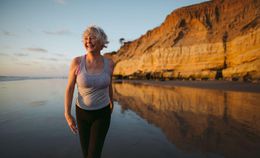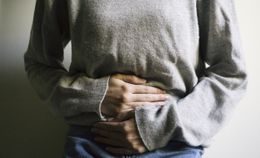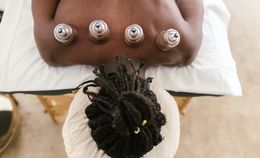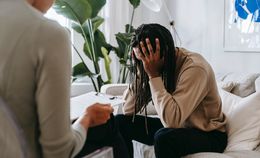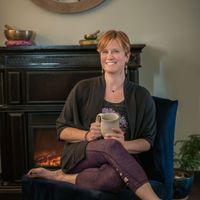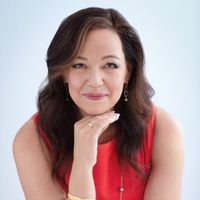Does your baby seem to have colic? Does your toddler or older child have challenges with sleep?
Sleeping Disorder in Babies and Older Children
According to a study published in "Sleep", sleep disorders in children are quite frequent. There is a higher number reported for those with difficulty in initiating sleep than others with problems in maintaining sleep. The authors classified sleep disorders in children into two categories:
-
Children with transient symptoms of insomnia
-
Children with persistent sleep problems
The study, however, recommended that parents/caretakers should not underestimate the severity of sleep disorders and should have their children included in a therapeutic and diagnostic process to solve this problem.
Sleep disorders symptoms in babies and older children are different from those observed in adults. It is therefore essential that parents and caretakers take note of this. Sleep disorders in babies are pervasive and closely related to central nervous system immaturity., The baby usually outgrows it.
Signs of a Sleep Disorder in Children
Sleep disorders in children can be categorized by:
-
A state of heightened alertness
-
Anxiousness
-
Crying inconsolably
-
Jumpiness
-
Exhaustion
-
A dislike for hair bows and hats
3 Reasons Why Craniosacral Therapy May Help Babies and Children with Sleep Disorders
There are quite a few different reasons why a baby or toddler may have an aversion to hair bows and hats - and why this is not a sign of a possible sleep disorder. A parent, paying close attention to their child can really pay off. Here is why:
-
The Reticular Alarm System (RAS) alerts the body to danger and activates the flight or fight response.
-
There may be retained molding going on in the baby's cranial bones so that
-
he/she feels uncomfortable with the constant feeling of pressure in the head. This is exacerbated by lying down.
-
When a baby is delivered through traumatic labor or post-delivery, especially when medical interventions such as forceps, vacuum or emergency C-section is used - it may activate their RAS, which might be unable to switch off, even after delivery. This leads to tension being felt in the whole body.
How Craniosacral Therapy Can Help a Baby Sleep More Soundly
Craniosacral Therapy not only calms the RAS but also regulates the central nervous system. At the start of the session, the baby may appear out of sorts; but this will fade, and you will have a more contented baby with healthy feeding and sleeping patterns as the days go on.
7 Other Conditions Craniosacral Therapy Can be Helpful for Older Children
Sleeping disorders are not the only health condition craniosacral therapy can be beneficial for older children.
There are seven other conditions craniosacral therapy can address in older children:
-
Emotional challenges
-
Behavioral challenges
-
Posture imbalances
-
Post-surgery recovery or preparation for surgery
-
Developmental delay
-
Learning disabilities
-
Leftover stress from birth
According to a study published in Elsevier B.V., alternative therapies such as yoga, massage, and craniosacral therapy are effective to treat sleeping disorders in children of ages 6-17 years. However, it suggested a need to further characterize the efficacy and safety of these therapies for sleep in children.
Cost
The average price per session in the country is $70-$170. These are rates for adults. Sessions for children are often not an hour long. And so, many craniosacral therapy practitioners charge a lower fee per session when treating children. Always be sure to ask a practitioner if they offer different rates for children versus adults. For more information, read: How Much Does Craniosacral Therapy Cost?
References :
Craniosacral Therapy for Better Sleep. (n.d.). Retrieved April 14, 2019, from https://www.iahe.com/docs/articles/Article_-_CST_for_Better_Sleep.pdf
Excessive Daytime Sleepiness - American Sleep Association. (n.d.). Retrieved April 14, 2019, from https://www.sleepassociation.org/sleep-disorders/more-sleep-disorders/excessive-daytime-sleepiness/
Mataran-Penarrocha, G. A., Castro-Sanchez, A. M., Garcia, G. C., Moreno-Lorenzo, C., Carreno, T. P., & Zafra, M. D. (2011). Influence of craniosacral therapy on anxiety, depression and quality of life in patients with fibromyalgia. Evidence-based complementary and alternative medicine : eCAM, 2011, 178769. doi:10.1093/ecam/nep125. Retrieved April 14, 2019, from https://www.ncbi.nlm.nih.gov/pmc/articles/PMC3135864/
National Sleep Awareness Week Unhealthy Sleep-Related ... (n.d.). Retrieved April 14, 2019, from https://www.cdc.gov/mmwr/pdf/wk/mm6008.pdf
The use of CranioSacral therapy for Autism Spectrum Disorders: Benefits from the viewpoints of parents, clients, and therapists. Kratz, Susan Vaughan et al. Journal of Bodywork and Movement Therapies, Volume 21, Issue 1, 19 - 29. Retrieved April 14, 2019, from http://massagetherapyfoundation.org/wp-content/uploads/4-Susan-Kratz_Craniosacral-for-autism_2016.pdf
Torday, J. S. (2015, September 15). Homeostasis as the Mechanism of Evolution. Retrieved April 14, 2019, from https://www.ncbi.nlm.nih.gov/pmc/articles/PMC4588151/



